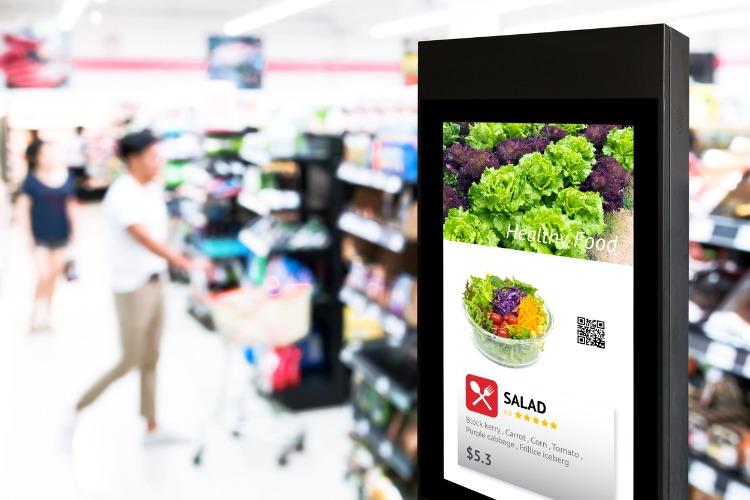How AI-Powered Digital Signage is Enhancing Customer Experience
In the early years of the 21st century AI digital signage software has become and is increasingly a transformative force in the way that businesses choose to interact with their customer. Businesses strive to create more personalized, dynamic experiences that cater to more individual needs and preferences in real time. Through analyzing gathered customer data and updating/adjusting content in response, retail spaces, hospitality venues and public transport hubs alike can be taken to the next level.
AI Digital Signage Software: Revolutionizing Customer Engagement
For many businesses, AI digital signage software has become an incredibly powerful tool for the purpose of capturing attention and improving overall customer engagement. Striking a difference from more traditional signage that needs to run on a pre-set loop, AI-driven signage can use machine learning algorithms to showcase content that has been tailored based on factors like behaviors, preferences and demographics. Obviously, this aids massively in making interaction between brand and customer feel more personal.
Key benefits include:
-
Real Time Adaptability
Content can be adjusted in an instant based on who is viewing the signage, ranging from promotions to product recommendations and more.
-
Increased Engagement
Relevant, targeted information can be shared that resonates with each individual viewer to increase levels of engagement.
-
Guided Customer Journeys
Purchasing decision are made easier because digital signage can not assist in product location information but also offer products tailored to their specific interests.
The Role of Data in AI-Powered Digital Signage
Data is right at the heart of AI digital signage software, allowing systems to gather the insights needed to fine tune content for the most optimal engagement.
Some of the data that is collected when a customer interacts with digital signage could be:
- Gender
- Age range
- Time spent viewing
- Specific content type engagement
This data (and sometimes more) can then be used to create a unique user profile that allows for any future content to be much more personalized. The act of integrating CRM (customer relationship management) systems with POS (point of sale) data allows AI-powered digital signage the create a completely seamless digital touchpoint experience. What this effectively means is that customers can see much more tailored content related to things like purchase history, which in turn will enhance satisfaction and loyalty.
Some further examples of factors AI digital signage content can be adjusted for include:
-
Environmental Conditions
For example, making the decision to promote a range of warm drinks during a period of cold days.
-
Seasonal/Time Sensitive Promotions
AI signage can display special morning deals for things like breakfast, or switch to holiday themed deals at the right times of the year for the big seasonal events like Thanksgiving, Halloween or Christmas.
Enhancing In-Store Experiences with AI Digital Signage
Across retail environments, AI digital signage software has truly become an invaluable way to engage with customers and create the best immersive experiences. Some of the ways that this is being achieved include:
-
Demographic Targeting and Facial Recognition
This is a feature that analyzes a viewer’s characteristics and attempts to adjust the content accordingly, considering factors like age to promote youthful products to younger customers, for example.
-
Data Driven Layout Optimization
Popular products can be identified, as well as spaces like high traffic areas that allow decision makers to optimize their store layouts in the best way to achieve the highest sales and engagement figures.
-
Self Service Options
Signage can be used in the guise of touch screen displays that allow customers to do everything from locating specific items to browsing inventory to exploring offers to requesting real time assistance from staff without needing to seek someone out in person.
AI Digital Signage in Hospitality and Public Spaces
Beyond the realm of in store retail, AI digital signage is also making huge waves for enhancing customer experience across wider hospitality and public sectors.
-
Hotels
Hotels can implement features like personalized greetings, real-time updates on amenities and recommendations for local attractions.
-
Transport Hubs
In places like train stations and airports, signage can provide tailored guidance based on the real time needs of a traveler. This can include things like directions, gate changes and even special offers.
Real-World Examples of AI Digital Signage in Action
Some of the most notable examples of AI digital signage software being put into effective action in recent years have been Walmart, Amazon and McDonald’s. The first two have been able to track shopper behavior with adapting in store promotions in mind, while McDonald’s has implemented menus that can change based on factors like weather, customer traffic and time of the day.
Conclusion
Ultimately, it is clear to see that AI-powered digital signage is reshaping the traditional customer experience in a really positive and innovative way. The ability to collect and analyze crucial customer data gives brands the tools to be able to create much stronger relationships with their customers, driving sales, reputation and loyalty.

